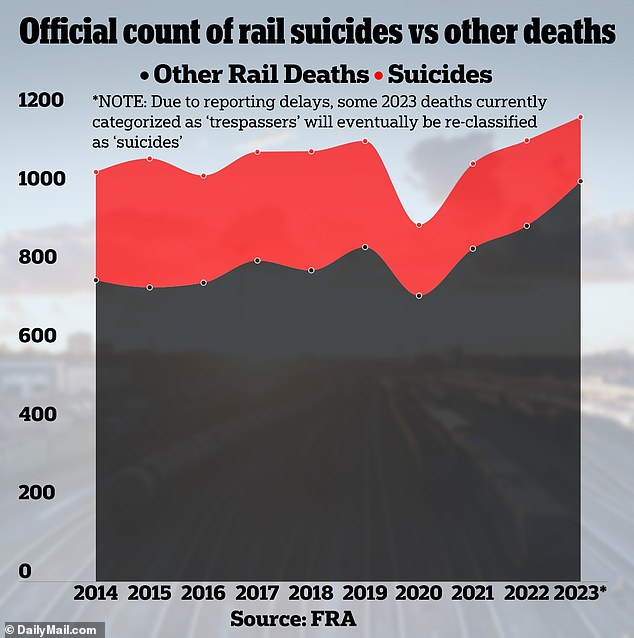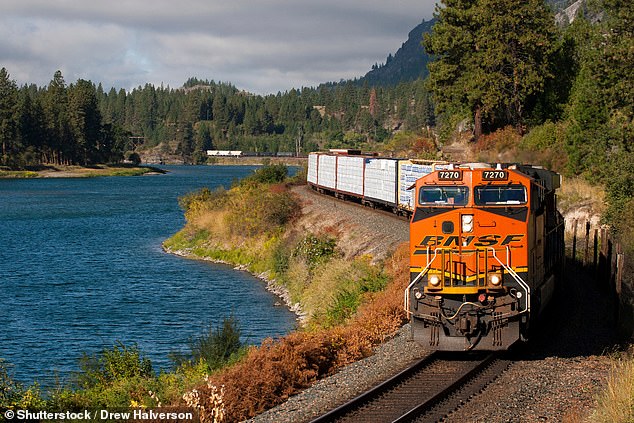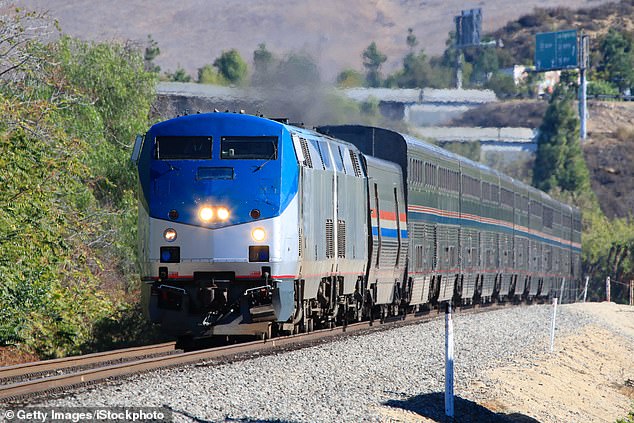Although high-profile train derailments and crossing collisions attract the most attention, the deadliest problem in America’s rail system may be flying under the radar.
Reports issued by the United States Federal Railroad Administration (FRA) state that suicides account for less than 30 percent of all railroad deaths in the country over the past decade.
But recent research, backed by multiple industry experts interviewed by DailyMail.com, suggests that the majority of all train-related deaths in the US are intentional and self-inflicted.
That would mean that rail operators tasked with reporting casualty incidents to the FRA are misclassifying hundreds of suicides as accidents each year, including in some cases where the local coroner ruled the death a suicide.
“We’re dealing with a problem that we haven’t properly diagnosed,” said Kurt Topel, a rail safety expert who has studied the issue. “And so we’re treating a disease that the patient doesn’t have, and we’re not treating a disease that he does have.”

Federal data (above) claims that suicides account for less than 30 percent of all railroad deaths in the country, but experts believe suicides are dramatically underestimated.
In 2022, the most recent year with complete data, there were a total of 1,123 deaths on U.S. railroads, including 217 officially classified as suicides, or 19 percent of the total, according to official FRA data.
But in an interview, Topel told DailyMail.com that he believes those figures are wildly inaccurate, falsely labeling more than half of real suicides as accidental.
In 2022, Topel published a study examine all railroad deaths in Illinois during 2019 and compare official FRA incident reports to local police and coroner reports of each death.
It found that even in some cases where the coroner ultimately ruled the death a suicide, the rail operator did not update its victim report to the FRA.
Another less common problem he identified is that some deaths that seemed definitely intentional in police reports were declared “undetermined” by coroners, perhaps in deference to family sensitivities.
Overall, Topel found that less than half of official suicides were correctly reported in the FRA data he audited, and that more than half of all rail deaths covered in the review were self-inflicted.
Those figures are more in line with those in Europe, where officials say suicides account for about 75 percent of all railroad deaths.
Topel said he has been working on additional research into railroad deaths in Florida for several years, and that initial findings support his claim that railroad suicides are underreported.
She became passionate about the issue of railroad safety after a personal tragedy in 2011, when her daughter, just 20 years old and a senior at Boston College, was struck and killed by a train.
“The years between 2011 and 2013 are a blur: total devastation,” Topel recalled. “At some point, we decided we would find ways to prevent some parents from suffering the same devastation.”


Topel found that less than half of official suicides were correctly reported in the FRA data it audited, and that more than half of all rail deaths in the review were self-inflicted (stock)
Christopher Barkan, a professor at the University of Illinois and director of the school’s Center for Rail Transportation and Engineering, called the research “high quality” and told DailyMail.com that it deserves further investigation.
“What needs to be done is a study on a much larger scale,” he said, calling on the FRA to carry out a rigorous audit of its mortality data.
“The striking thing (to me) about Kurt’s analysis is that in some cases a subsequent finding of suicide by the coroner or medical examiner does not lead to the Federal Railroad Administration being informed of an amended record,” the professor said. of economics at Northwestern University, Ian Savage. , who studies railroad safety, in an email.
Why are railroad suicides in the United States underestimated?
Full-year rail mortality data for 2023 recently released by the FRA on Friday illustrates some of the problems with the way deaths are reported.
Typically, any death outside a grade crossing is automatically listed as a “trespasser” at first, a category that includes people struck while walking on the tracks or attempting to cross them outside of a designated crossing.
If a local coroner later rules the death a suicide, the rail operator is supposed to go back and update the FRA incident report with the finding, at which point the death is confusingly removed from the “total” of deaths and is added to a separate ledger for suicides. .
But a coroner’s ruling can take many months, delaying reclassification.
Thus, by 2023, it currently appears that of the 1,183 rail deaths, only 14 percent were suicides, compared to the average of 24 percent reported between 2014 and 2022.
Over time, as some 2023 deaths are reclassified, the total will remain the same, but the proportion counted as suicides will increase, likely ending up in line with recent years.
But Topel’s research suggests that, whether through carelessness or some kind of flawed process, many deaths that coroners ultimately rule as suicides are never updated in the FRA count.
Although train drivers can often have definitive ideas about whether someone intended to be hit by their trains, railroads insist their hands are tied to quickly rule out deaths as suicides.
A spokesperson for Union Pacific, one of the country’s largest railroads, told DailyMail.com in a statement: “Union Pacific reports suicides to the Federal Railroad Administration when we have appropriate documentation from a public official.”
The statement added: “Under Federal Railroad Administration rules, only a public official, such as a coroner, can determine that a death is a suicide, which can take up to a year in some jurisdictions to receive an official decision.”
“Union Pacific is committed to safety and suicide prevention by working to keep trespassers off our rights-of-way and more than 32,000 miles of roadway.”


Topel told DailyMail.com he believes official figures are wildly inaccurate, falsely labeling more than half of real suicides as accidental.
National passenger rail service Amtrak declined to immediately comment, while BNSF Railway, the largest U.S. railroad by miles of track, referred questions to an industry group, the Association of American Railways.
“Unlawful trespasses and suicide deaths remain a persistent challenge on the nation’s railroads,” an AAR spokeswoman said in a statement, noting that “coroners, not railroads, are ultimately responsible” for determining deaths by suicide on railways.
The FRA has not responded to DailyMail.com’s requests for comment.
Experts say accurately understanding whether most train deaths are accidental or self-inflicted is key to addressing the problem and reducing fatalities.
“These are two very different phenomena and require very different corrective and preventive measures, which is why it is important,” Barkan said.
He noted that over the past 30 years, American railroads overall have become much safer, with fewer derailments and deaths at crossings.
The only exception to this trend is the killing of “intruders,” which has remained stable with little improvement in recent decades.
Topel points out that some of the measures that could be effective in reducing accidental deaths, such as large warnings reminding people of nearby fatal danger, could actually exacerbate the suicide problem.
‘Those who are not aware of the danger need to be educated. “For those who (seek to harm themselves), you probably don’t want to remind them of the clues,” he said.
He noted that most rail safety initiatives focus on raising awareness about the dangers of trains, under the assumption that most deaths on the tracks are accidents.
“In fact, I think it not only doesn’t help, it hurts,” he said.
For confidential support, call or text US Suicide and Crisis Lifeline at 988.

